Posterior MI
|
ST Elevation Myocardial Infarction Microchapters |
|
Differentiating ST elevation myocardial infarction from other Diseases |
|
Diagnosis |
|
Treatment |
|
|
Case Studies |
|
Posterior MI On the Web |
|
Directions to Hospitals Treating ST elevation myocardial infarction |
Editor-In-Chief: C. Michael Gibson, M.S., M.D. [1] Synonyms and keywords: true posterior MI
Overview
A posterior MI is a heart attack or cessation of blood flow to the heart muscle that involves the backside or posterior side of the heart. Rather than causing the traditional ST segment elevation characteristic of the electrocardiogram of many heart attacks (a "STEMI"), because the heart attack is on the opposite side of the heart, the ST segments are depressed in the anterior precordial leads rather than elevated.
Pathophysiology
A posterior MI is due to occlusion of the left circumflex artery.
EKG Examples of Posterior MI
Shown below is an EKG with ST elevation in II, III, aVF (in III > II), ST depression in I, aVL, V2. Tall R in V2, otherwise normal QRS morphology. The findings are suggestive of acute posteroinferior MI.
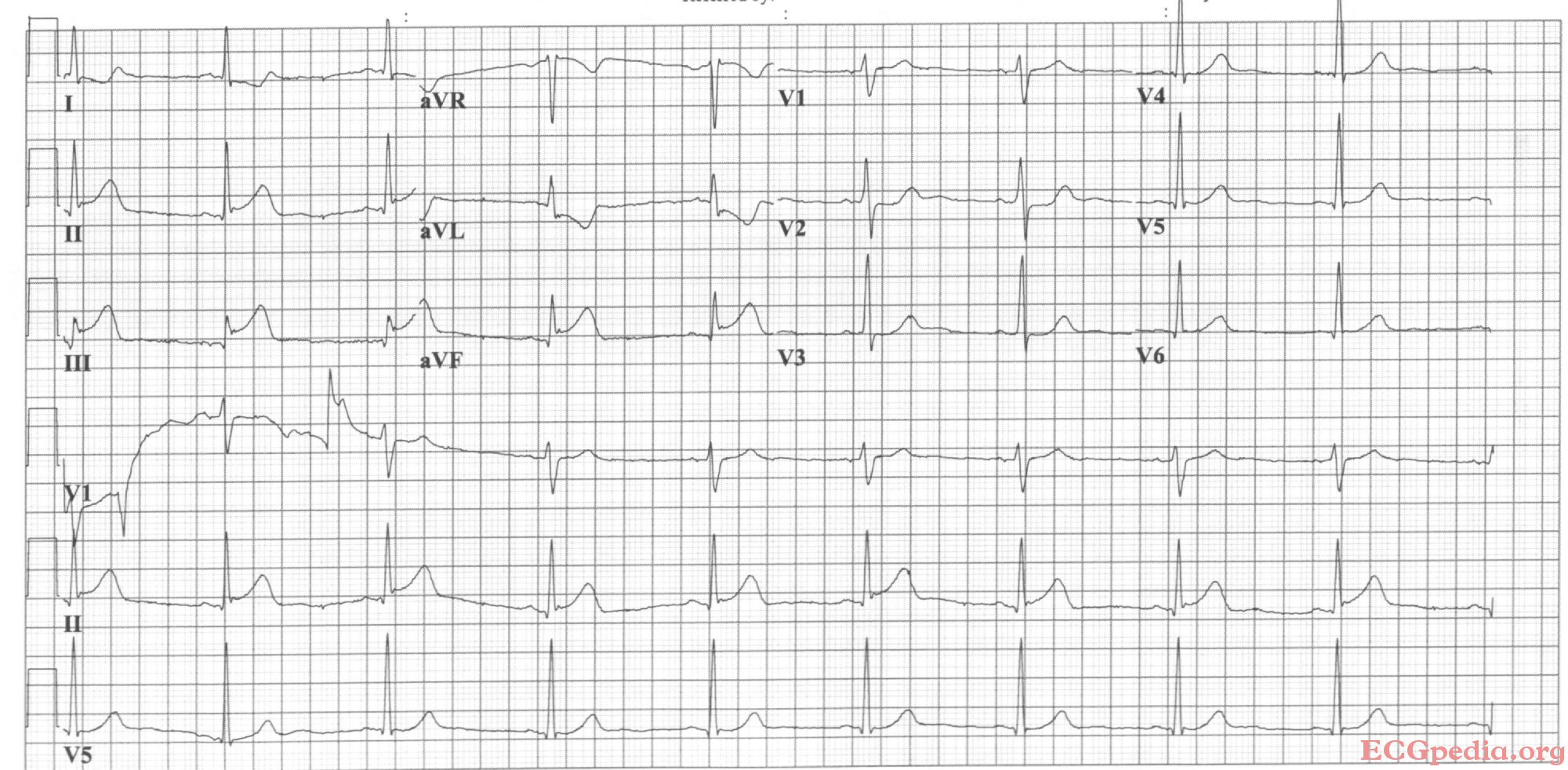
Copyleft image obtained courtesy of, http://en.ecgpedia.org/wiki/Main_Page
Shown below is an EKG demonstrating changes during acute posterolateral MI depicting ST depression in precordial leads V2-V6.
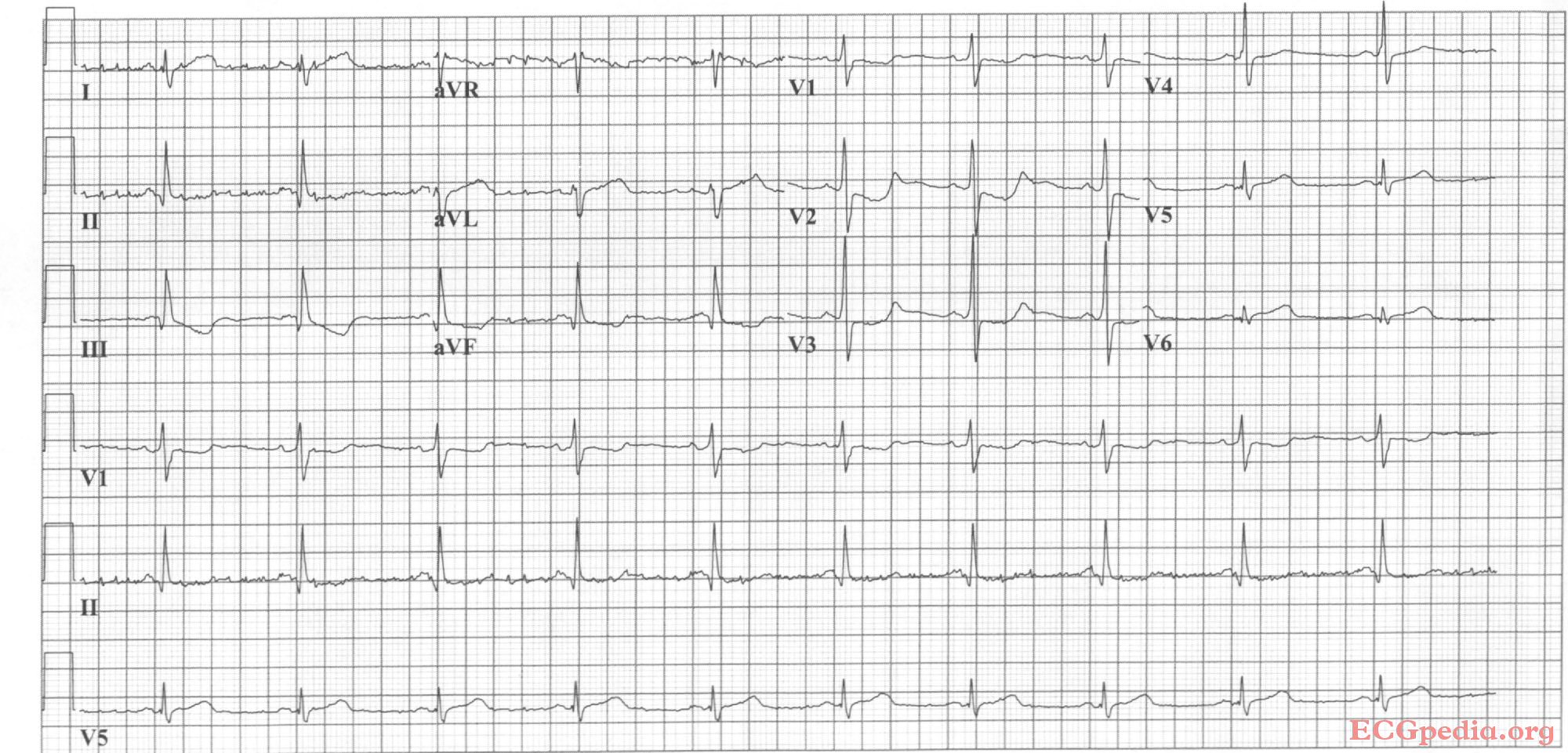
Copyleft image obtained courtesy of, http://en.ecgpedia.org/wiki/Main_Page
Shown below is an EKG with ST depression in V1, V4, tall R in V2. ST elevation in II, III, aVF, V5 and V6.
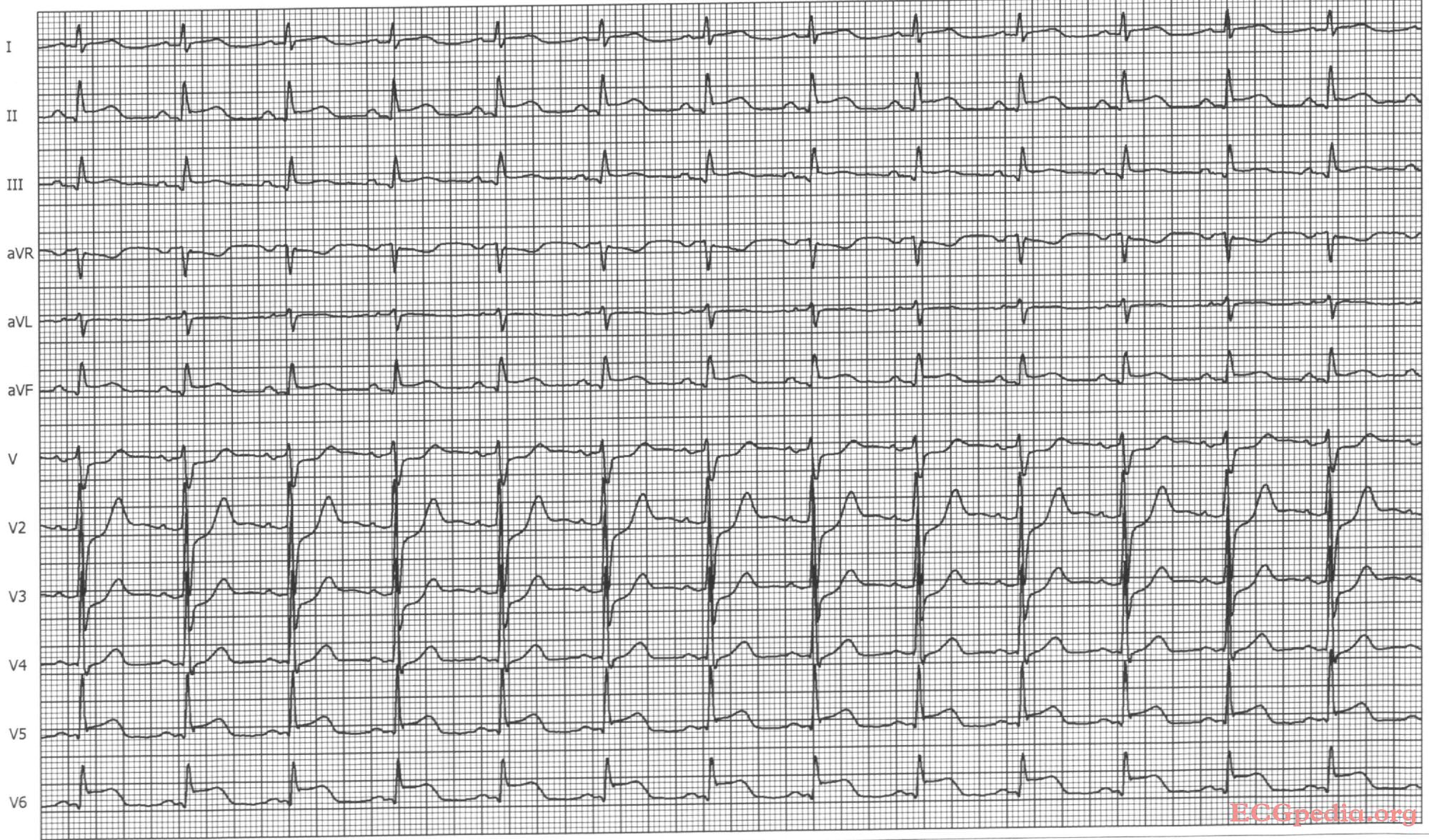
Copyleft image obtained courtesy of, http://en.ecgpedia.org/wiki/Main_Page
Shown below is an EKG illustrating inferior-posterior myocardial infarction with complete AV block and ventricular escape rhythm with RBBB pattern and left axis, followed by sinus rhythm.
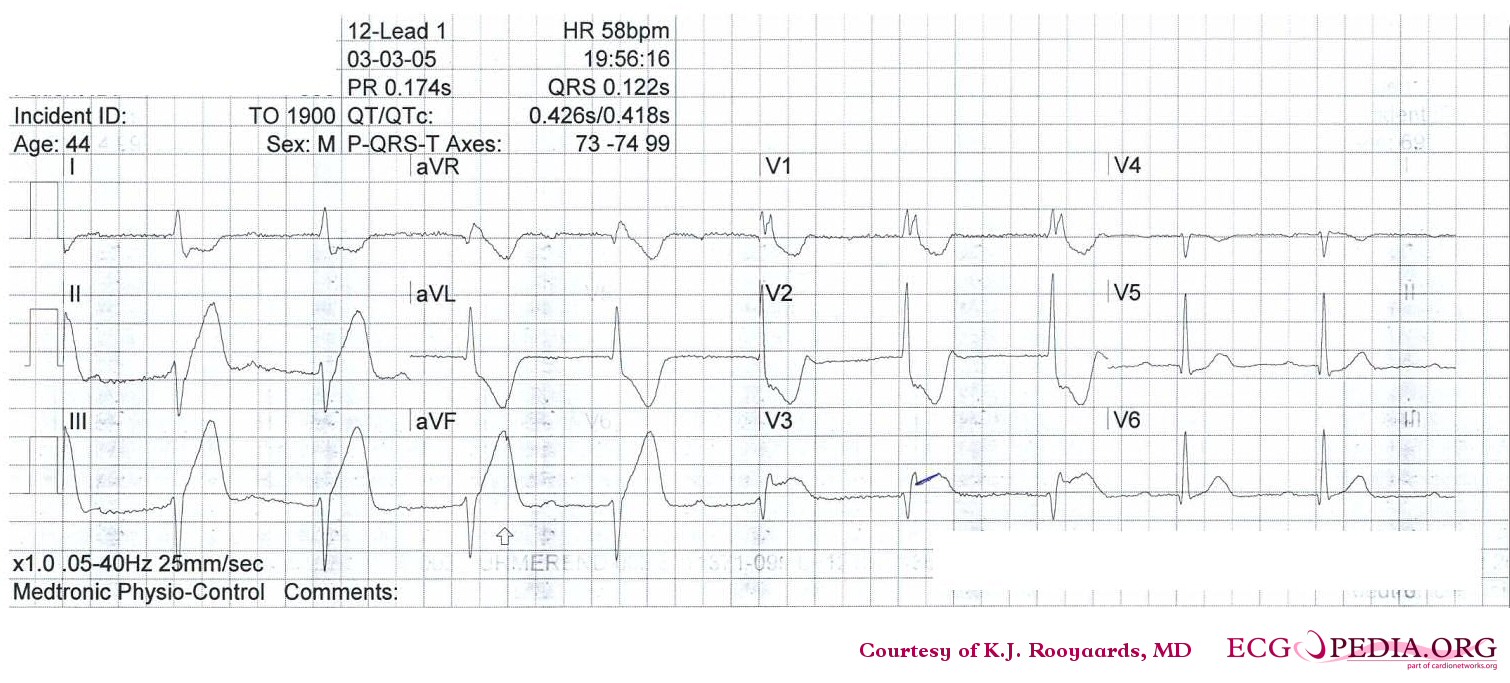
Copyleft image obtained courtesy of, http://en.ecgpedia.org/wiki/Main_Page
Shown below is an EKG demonstrating atrial fibrillation and inferior-posterior myocardial infarction.
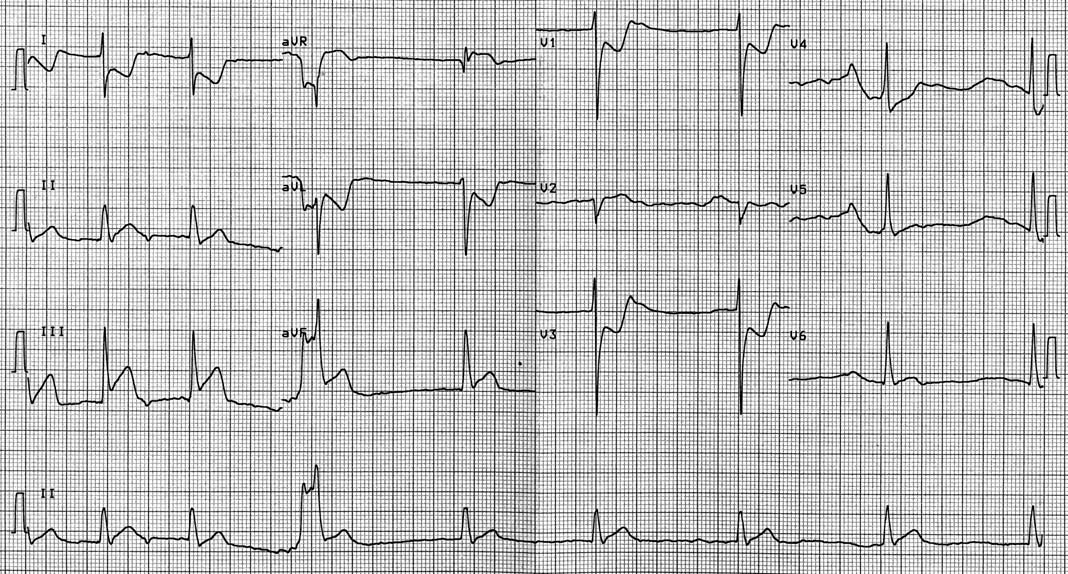
Copyleft image obtained courtesy of, http://en.ecgpedia.org/wiki/Main_Page
Shown below is an EKG demonstrating inferior-posterior-lateral myocardial infarction with a nodal escape rhythm
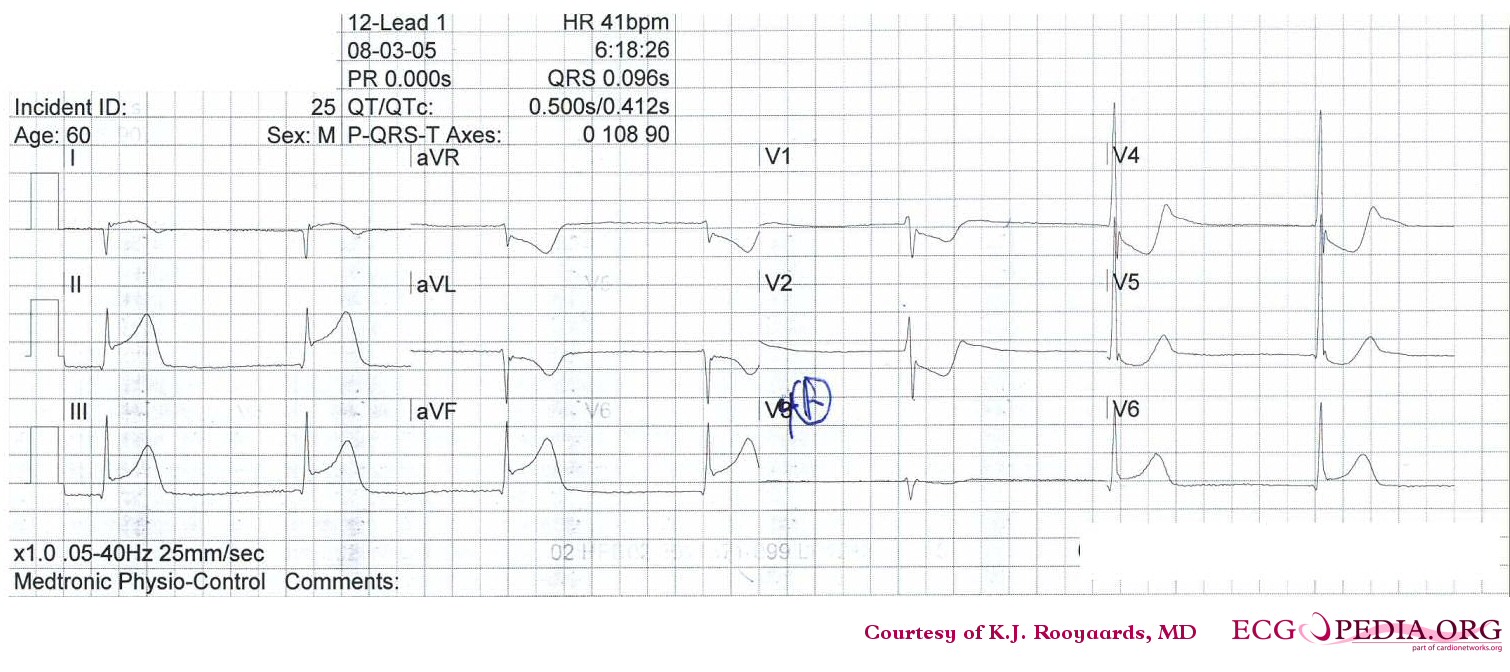
Copyleft image obtained courtesy of, http://en.ecgpedia.org/wiki/Main_Page
Shown below is an EKG demonstrating atrial fibrillation with inferior-posterior-lateral myocardial infarction and incomplete right bundle branch block. Lead I shows ST depression, suggestive of right coronary artery involvement.
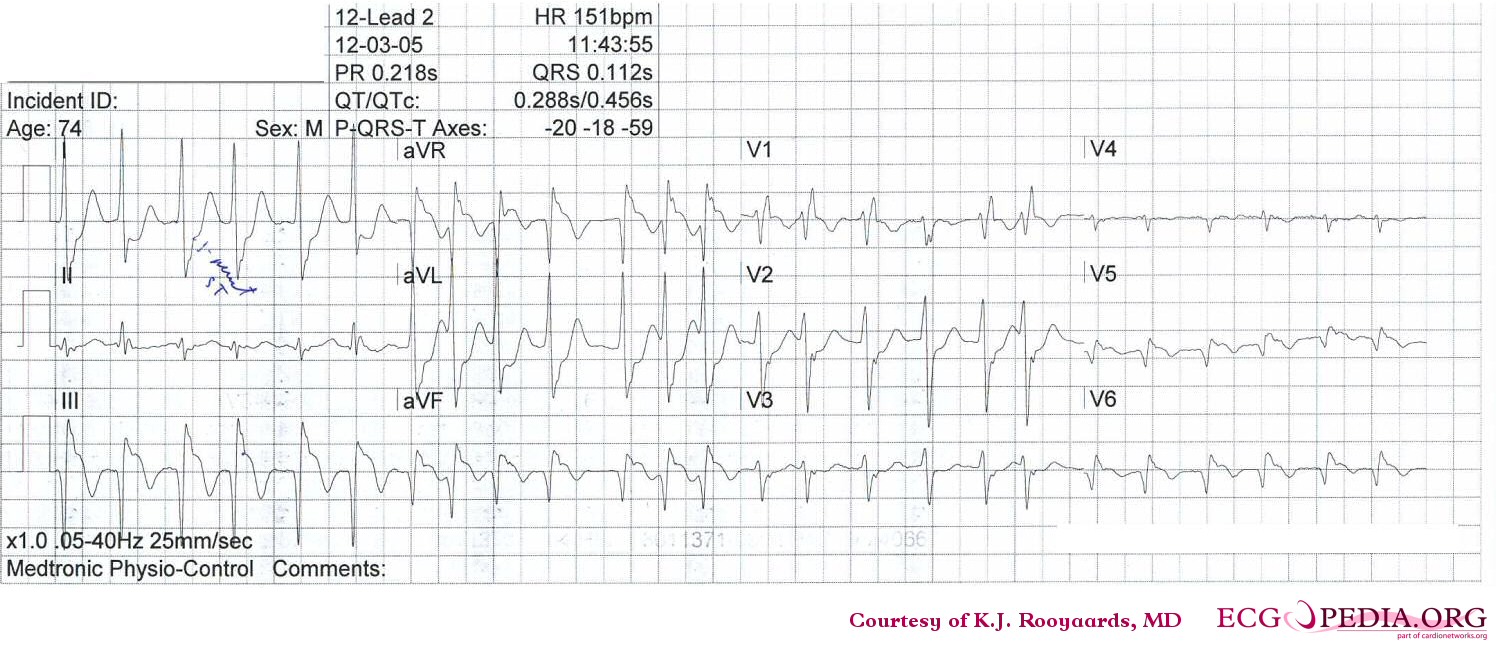
Copyleft image obtained courtesy of, http://en.ecgpedia.org/wiki/Main_Page
Shown below is an EKG demonstrating typical negative T waves post anterior myocardial infarction. This patient also shows QTc prolongation. Whether this has an effect on prognosis is debated. [1][2][3]

Copyleft image obtained courtesy of, http://en.ecgpedia.org/wiki/Main_Page
Shown below is an EKG demonstrating ST elevation in leads II, III and aVF and ST depression in leads V1, V2 and V3 depicting a posterior MI.
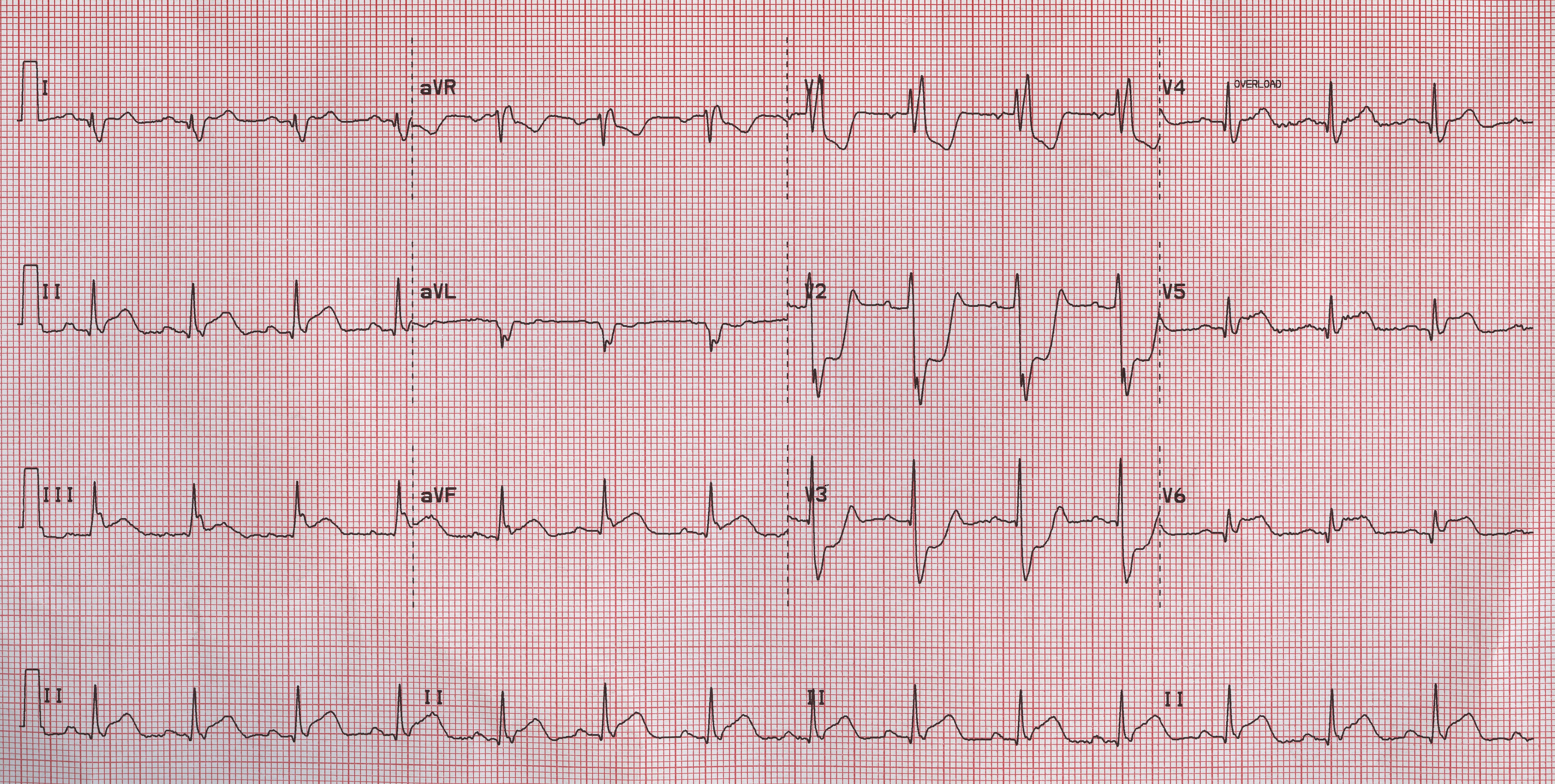
References
- ↑ Novotný T, Sisáková M, Floriánová A; et al. (2007). "[QT dynamicity in risk stratification in patients after myocardial infarction]". Vnitr Lek (in Czech). 53 (9): 964–7. PMID 18019666. Unknown parameter
|month=ignored (help) - ↑ Jensen BT, Abildstrom SZ, Larroude CE; et al. (2005). "QT dynamics in risk stratification after myocardial infarction". Heart Rhythm. 2 (4): 357–64. doi:10.1016/j.hrthm.2004.12.028. PMID 15851335. Unknown parameter
|month=ignored (help) - ↑ Chevalier P, Burri H, Adeleine P; et al. (2003). "QT dynamicity and sudden death after myocardial infarction: results of a long-term follow-up study". J. Cardiovasc. Electrophysiol. 14 (3): 227–33. PMID 12716101. Unknown parameter
|month=ignored (help)